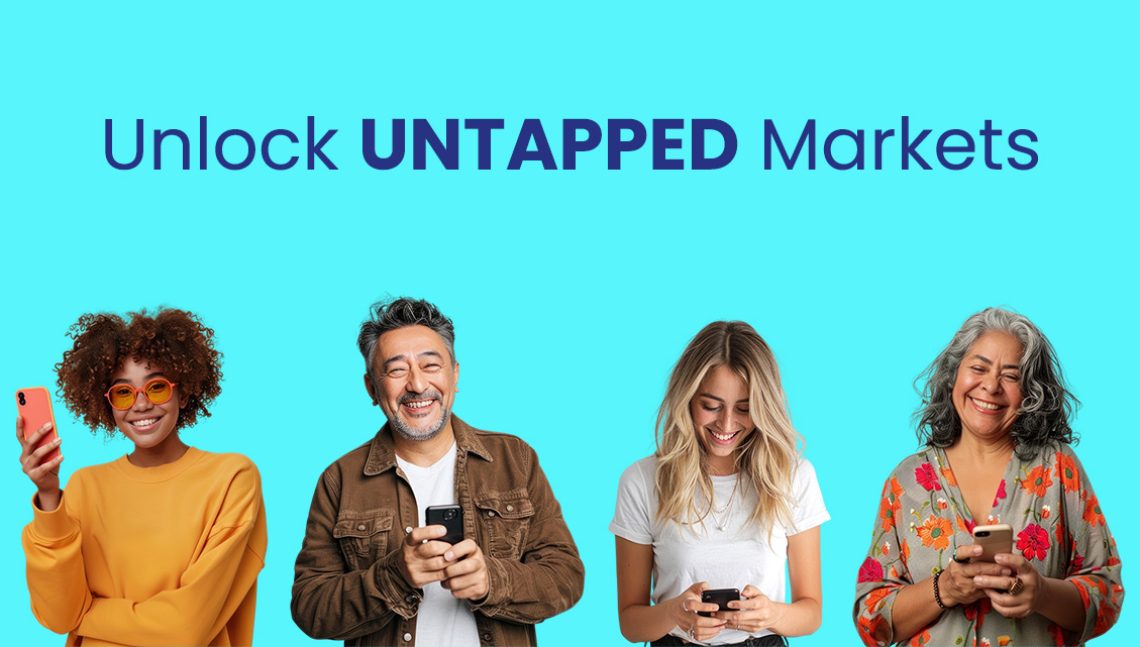As marketing managers, we’re constantly hunting for untapped opportunities and audience segments that competitors haven’t fully captured. The data reveals a striking reality: some of the most lucrative consumer groups feel invisible in today’s advertising world—and that presents an opportunity for brands willing to look beyond traditional targeting.
The Rural Market
Only 5% of consumers in Montana feel acknowledged by advertising, compared to 13% in New York. While those numbers might seem low across the board, they reveal a stark geographic divide that’s costing brands significant revenue.
Rural consumers represent 15% of the global online population, yet they’re disproportionately valuable in specific categories. They make up 20% of motorbike shoppers and 18% of regular movie goers. Moreover, 53% prefer online shopping to in-store—due to limited local retail options.
The opportunity: Rural consumers prioritize brands that support local businesses and emphasize traditional values over exclusivity or cutting-edge innovation. They also place higher importance on customer service quality when recommending brands. Amazon capitalized on this by launching their Delivery Partner Service, allowing local businesses to handle package delivery and customer service, creating familiar touchpoints that build trust.
Low-Income Earners
Low-income consumers are 38% more likely than high earners to feel underrepresented in advertising. Yet they’re highly reachable through the right channels. Because they’re more likely to use ad-supported subscription services, they encounter more advertising through mobile games, pre-roll ads, and music streaming platforms.
This creates more opportunities for storytelling without the barrier of premium, ad-free tiers. McDonald’s recognized this shift and refocused efforts on reconnecting with low-income customers after successfully growing their middle and high-income segments.
The Solo Economy is Booming
Single-person households are growing rapidly, driven partly by more people reaching 30 without children and increasing female economic independence. Yet marketing narratives rarely reflect this reality.
Solo dwellers have specific needs: one-person portions, mini appliances, and travel safety features. Solo travelers particularly value local insights and rely heavily on forums for research, making community-building and peer recommendations crucial for travel and hospitality brands.
Older Consumers: Untapped Digital Natives
Despite representing significant spending power, older adults appear in just 4% of advertisements. This oversight is costly: more 45–64-year-olds shop online weekly, own credit cards, and qualify as high earners compared to 25-34 year-olds.
The demographic is increasingly digital savvy. Daily TikTok usage among 45–64-year-olds jumped from 11% to 27% since early 2021, and they’re becoming more receptive to commercial content across platforms.
Baby Boomers present particularly interesting opportunities. They’re 159% more likely than average consumers to book travel on impulse (rising to 211% among retirees), yet they still want to feel they’re getting good value. Almost half demonstrate strong brand loyalty, and they prioritize real-world experiences—a third plan to attend the same number or more festivals this year compared to 2024.
The Asian American Representation Gap
While representation of Black consumers in advertising has received significant attention, Asian Americans remain notably underrepresented, particularly East Asians who are often typecast as analytical rather than creative.
East Asians use public transportation significantly more than average Americans but are less likely to discover products through transit advertising—a clear channel optimization opportunity. In sports marketing, this oversight was glaring: East Asian athletes were notably absent from Paris 2024’s promotional materials despite East Asians being more likely to follow Olympic coverage.
LGBTQIA+ Community
Gay and bisexual consumers are 26% more likely to work in marketing and feel better represented in advertising. However, transgender, gender-neutral, and bi-gender consumers remain largely invisible.
Transgender consumers gravitate toward platforms like Tumblr and Bluesky—spaces they consider digital safe havens. For brands in medicine, grooming, and sanitary products, there’s opportunity to co-create solutions with these communities, though building authentic relationships requires genuine commitment and time.
The Strategic Advantage
These underrepresented segments share common characteristics that make them valuable targets:
- Higher engagement rates due to feeling acknowledged and seen
- Stronger brand loyalty when brands authentically connect with their needs
- Word-of-mouth potential within tight-knit communities
- Less competitive landscape as fewer brands target them effectively
Making It Work
Success in reaching underrepresented audiences requires understanding unique challenges, preferred channels, and authentic value propositions. Rural consumers need reliable customer service and local partnership. Solo dwellers want practical solutions and community insights. Older consumers seek value and real-world experiences.
The brands winning with these audiences are solving real problems and building genuine connections. In an increasingly saturated market, these underrepresented segments may represent new engagement opportunities.
Ready to reach the audience that others are missing? Anchor’s demographic, geographic, and behavioral data enrichment services give you the precision targeting and analytics you need to connect with underrepresented segments efficiently. Don’t let revenue and impact stay on the table, contact our data experts today.


